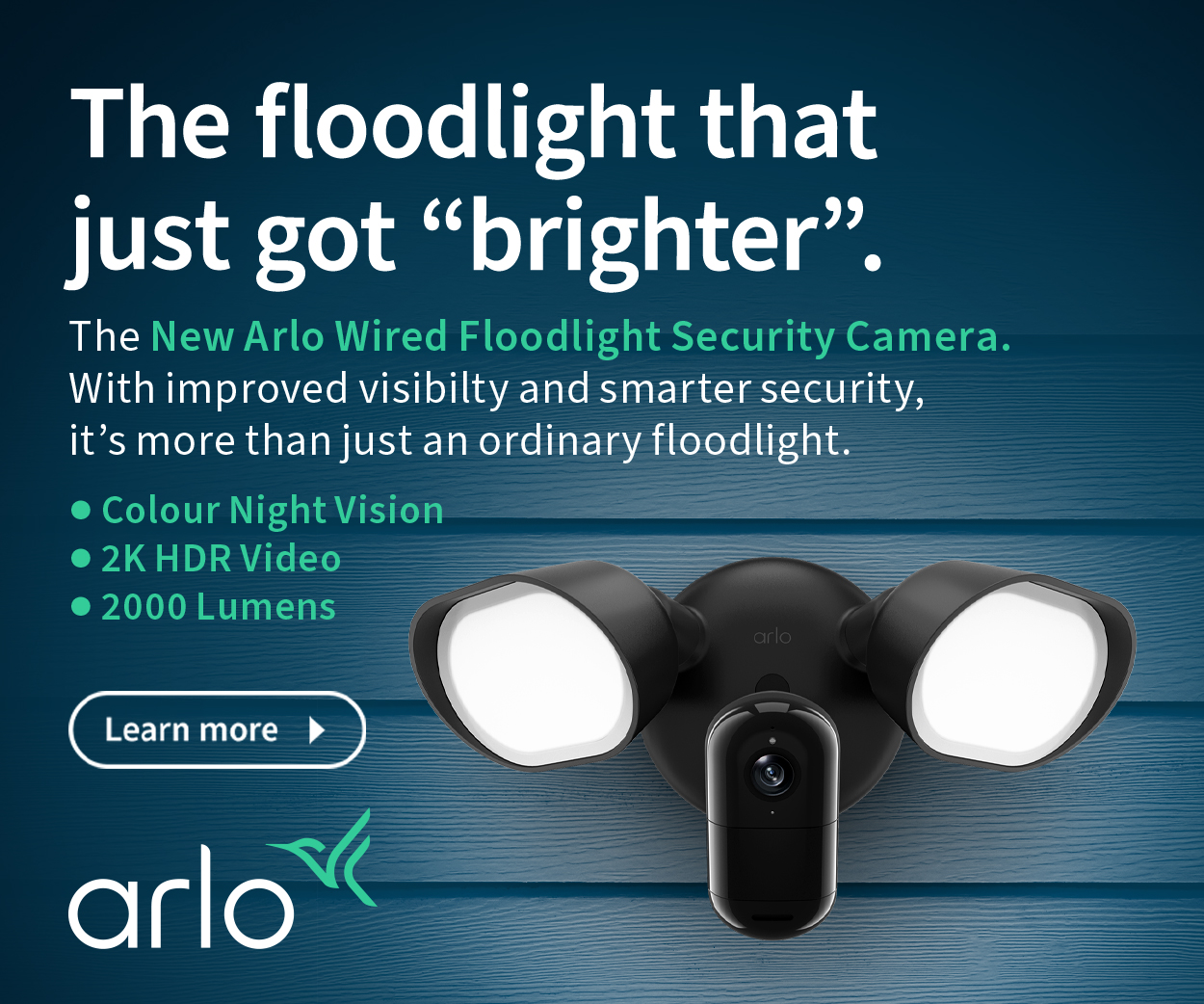Samsung Galaxy S24 Ultra – the ultimate Android smartphone (review)
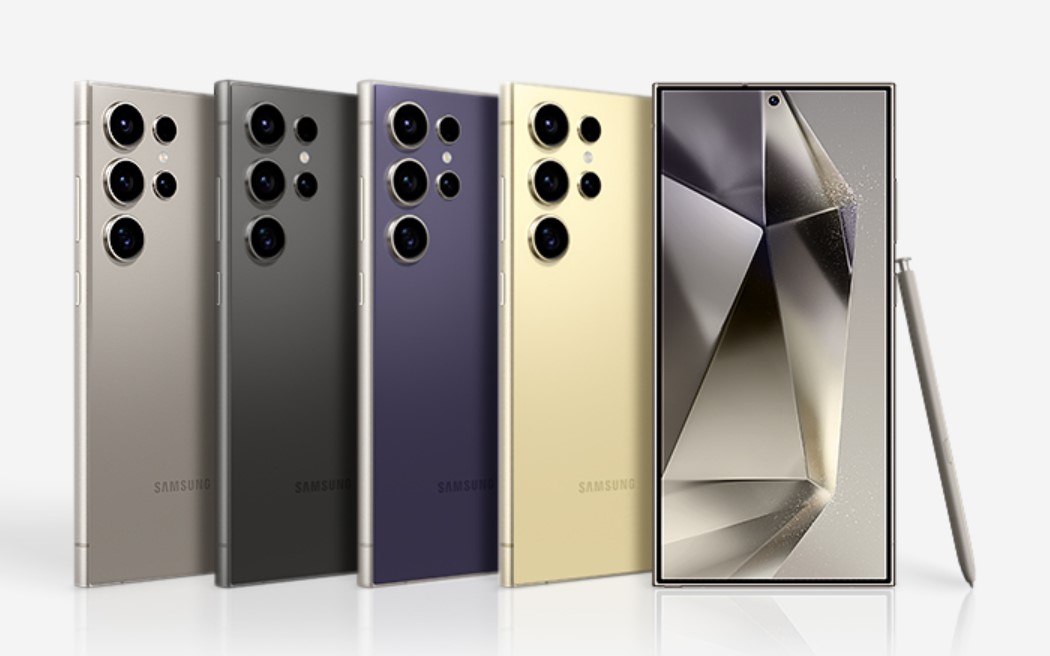
The Samsung Galaxy S24 Ultra is the world’s most full-featured glass slab smartphone – it even has a stylus. This year, Samsung has added AI to the mix to entice new buyers.
We delayed the Samsung Galaxy S24 Ultra review, waiting for at least one firmware update – there have been two very necessary ones.
The first installed the January 2024 security patch to improve system security. It fixed over 70 bug and stability issues, including Notification service, Samsung DeX, My Files, and Bluetooth pairing.
The most recent 750MB+ is to fix screen and camera issues, game booster and general stability. It also had the February security patch. The updates addressed (but some say wall-papered over the cracks) some serious bugs. Interestingly, reviews done before this will have inaccurate screen colour, brightness, contrast, and colour temperature measurements.
What was it that the long-departed Steve Jobs said? “Never let your users be crash-test dummies”.
Samsung Australia is not making review units for the S24 and S24+ available, so we cannot comment on the differences between the three models. Know this – the S24 and S24+ use the Samsung Exynos System-on-a-Chip and have very different performance profiles, phone signal strengths, and AI capabilities. Read: Samsung Galaxy S24-series – smarter and faster (Specification comparison).
Australian Deep-Dive Review: Samsung Galaxy S24 Ultra 12/256GB, Single SIM/eSIM Model SM-S9238B
| Website | Product Page | ||
| RRP 26/02/23 | $2199 12/256 $2399 12/512GB $2799 12GB/1TB $69 45W wall charger From $69 cases | ||
| Colours | Retail: Titanium Grey, Violet, Black, Yellow Samsung Online: Titanium Blue, Green, Orange | ||
| From* | Samsung online, Telstra, Optus, Vodafone, JB Hi-Fi, Harvey Norman, The Good Guys, Amazon, Officeworks, Bing Lee, Woolworths, David Jones, Myer, Costco, BIG W, Target, Radio Rentals, RT Edwards, Retravision, Betta and Australia Post. | ||
| Warranty | 24-months ACL | ||
| More | CyberShack Samsung News and Reviews | ||
* Grey market – no Australian warranty, and 5G may not work here
We strongly advise you to buy a genuine model with Australian firmware. Check at Settings, About Phone, Regulatory Labels and Australian RCM C-tick mark. Insist on a screen grab if you buy anywhere else.
Australian certified phones use unique Australian 5G sub-6Ghz and 5G low-band frequencies, requiring local activation first. Read Don’t buy a grey market smartphone.
Deep-Dive review format
It is in two parts – a summary (first) and a separate 300+ line database-driven spec, including over 70 tests to back up the findings. It also helps us compare different phones and features.
We use Fail (below expectations), Pass (meets expectations) and Exceed (surpasses expectations or is the class leader) against many of the items below. We occasionally give a Pass(able) rating that is not as good as it should be and a Pass ‘+’ rating to show it is good but does not quite make it to Exceed. You can click on most images for an enlargement (use the browser back arrow to return to the review).
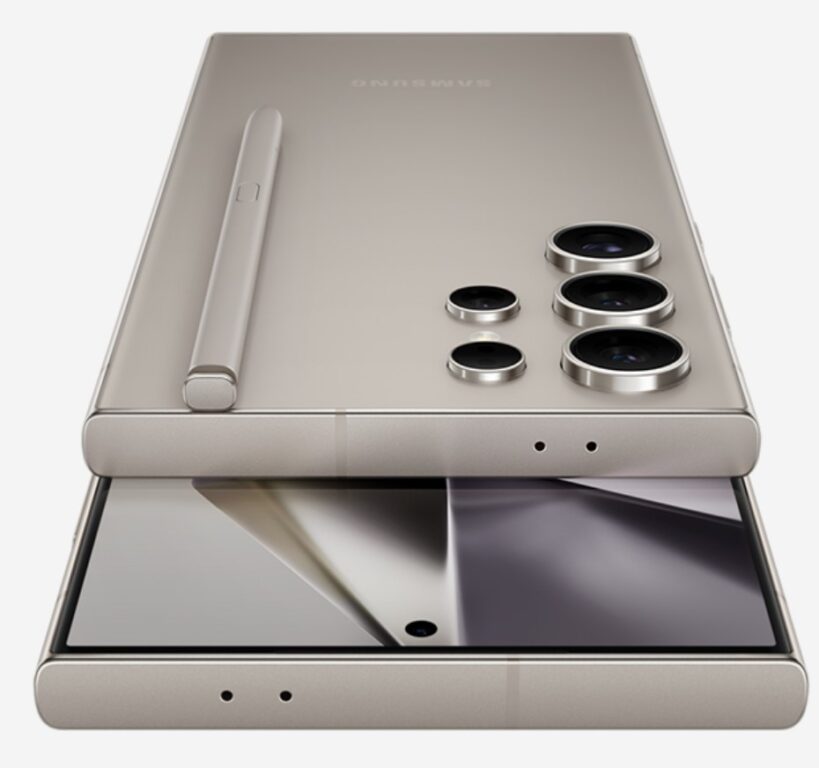
First Impression – A flat-screen S23 Ultra
I have reviewed every Samsung premium Note or Ultra phone since 2013. They all won the top spot for Android hardware, although OPPO’s fabulous FindX series were consistently better-performing devices.
This year, Gorilla Glass Armor increases screen hardness to 7 on the Mohs hardness scale and reduces screen reflections, resulting in more muted colours than the S23 Ultra (S23U). The second firmware update allows users to amp up the colours to S23U standards at the expense of accuracy.
A Titanium frame – so what? It has not reduced the weight – just followed Apple’s design cues. Last year, Samsung was sprouting its superior Aluminium Armor frame as a counter to Apple.
Hardware-wise, this is simply a processor/tech upgrade – S22U (Qualcomm 4nm SD8 Gen 1), S23U (4nm SD8 Gen 2) and S23 (4nm SD8 Gen 3). That is not a bad thing, as the Gen 3 gets the X75 modem, which supports dual active sims (handy for personal and business numbers), and each generation gets a little faster. Both S23U (Gen 2) and S24U (Gen 3) support some NPU (numeric processing unit) on-device Google Nano AI processing, although most (like the Google Pixel 8 and 8 Pro) will be done in the Google DeepMind Gemini Cloud.
How fast do you really need?
Sure, gamers and pro users might want an SD8 Gen 3, but 99% (made that statistic up on the fly) would be perfectly happy with a Qualcomm SD6 or SD7 series processor and a fraction of the price.
And what about the price?
S22U base ($1849), S23U base ($1949), and S24U base ($2199 with 12GB instead of 8GB). At the top end, it has gone from $2499 to $2799 in the same period. Sure, currency exchange rates have some impact, but Moore’s Law (the number of transistors on a microchip doubles about every two years with a minimal cost increase) and economies of scale mean new tech should not cost a lot more. Especially tech that is essentially a rinse-and-repeat of the previous two models. Apple cops abuse for its replication year after year of the same iPhone, too.
So, where is the innovation this year?
Allegedly AI. As Shakespeare said, “A rose by any other name would smell as sweet“.
It seems everything in 2024 will claim some form of AI – even toothbrushes. So do not let the marketing hype fool you. Are you buying the best smartphone, or are you desperate for some limited AI in your daily life? Read: What is Samsung Galaxy S24-series AI all about?
The short answer is that I have been using it as my daily drive for most of February, and AI is not the reason to buy this. In fact, it may be the reason you avoid it if you consider two issues. First, you could end up paying to have access to some AI features from the end of next year. Second, a reasonably large proportion of the AI requires a) using Samsung apps, b) a Samsung account and its privacy implications and c) an active mobile data plan to use them on the go (or NBN at home).
Samsung thinks it will sell more phones because of its heavy marketing for cute things like simultaneous translation or picture editing, but the truth is that real, useful AI is a very long way away.
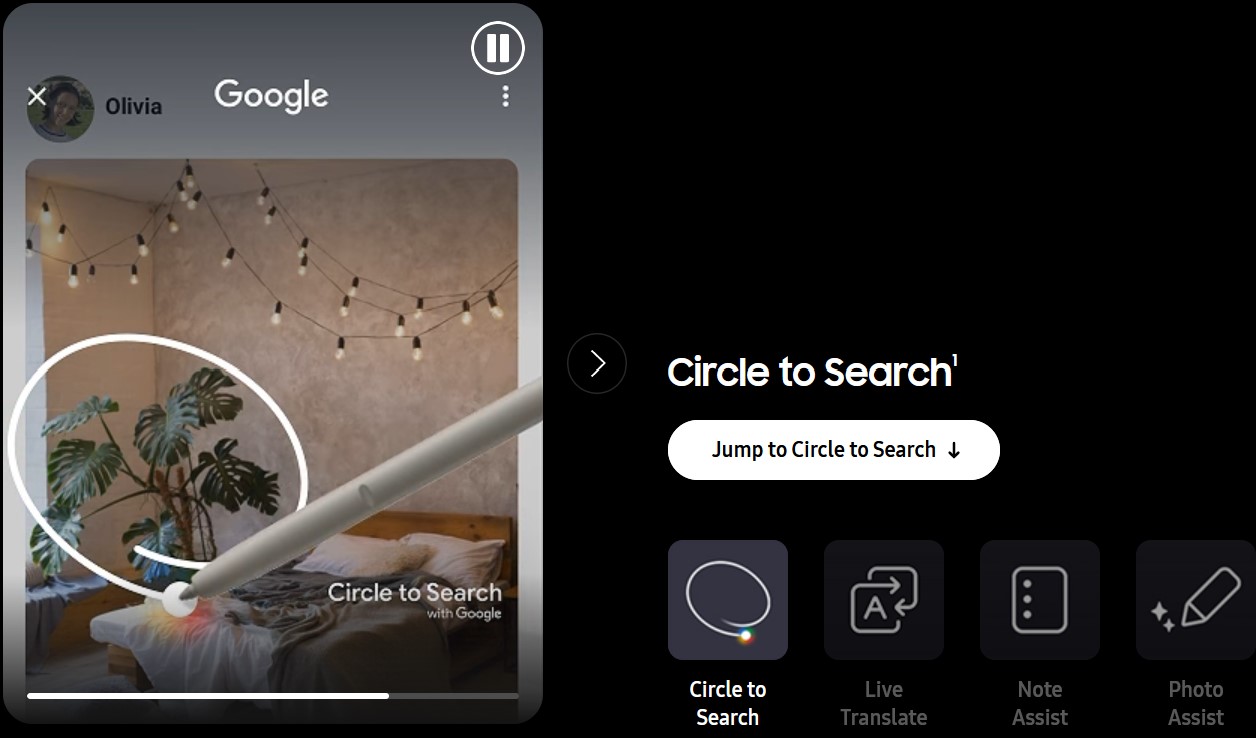
I am all for progress, but I suspect that 2024 will be the year of AI-washing (as 2023 was all about green-washing), and you would be wise to ignore any claims about AI and buy what you need – not what some marketer tells you that you need.
Screen – no innovation there – Pass
It is essentially the same LPTO AMOLED panel as the S22U/S23U – 3120 x 1440 (defaults to 2340 x 1080) with a fixed 60Hz or adaptive stepped 10/20/30/48/60/80/120Hz setting (tested).
Samsung’s long-standing decision not to support Dolby Vision (DV is downmixed to the vastly inferior HDR) in favour of its royalty-free HDR10+ means it can use a lower-cost, lower power, 8-bit/16.7M colour screen. Its competitors use 10-bit/1.07 billion colour screens and support DV in all its glory.
Now, you may ask if there is a big difference in normal use. To Joe and Jane Average, the answer is no. But for a $2000+ device, we think there is. The main issue is image preview versus image accuracy. Please read – it is a real eye-opener: 8-bit versus 10-bit screen colours. What is the big deal?
Tests (Samsung claim where applicable and Test result in brackets)
- Nits typical: Not stated (around 400 in typical use)
- Nits Auto-brightness on: Not stated (1300)
- Nits Auto-brightness off: Not stated (500)
- Nits Peak: 2600 (2400. This is not a measure of screen brightness but a measurement of nanosecond brightness in a 2 to 5% window for HDR10+ video content – it does not enhance daylight readability).
- sRGB 8-bit web colours: Not stated (Natural mode 115% and Vivid Mode 135%)
- DCI-P3 of 8-bit/16.7m colours (Natural mode 85% and Vivid mode 98%, but that is less than half the DCI-P3 10-bit gamut)
- Delta E (gamut accuracy): Not stated (Vivid mode 2.2, which is far higher than expected)
While this can play 1080p HDR content (Netflix/Amazon Prime), you only usually see Standard Definition (SDR) playback.
Pulse Width Modulation (PWM): we measured two PWM peaks – one at approx. 240-250Hz and one at approx. 480-500Hz. This results in a pulsing or banding effect visible at low brightness levels. The second peak is more eye-friendly and should be less of an issue with PWM-affected eyesight. Samsung, Apple, and Google (which use the Samsung 8-bit OLED panels) are the main PWM offenders. Other brands using OLED panels are now using DC-dimming or a PWM rate over 1000Hz.
Glass Protection: Gorilla Glass Armor Up to 7 Mohs hardness scale scratch resistance and less reflection. Same drop protection as GGV2.
Processor – Qualcomm SD8 Gen 3 – Pass+
This would have earned an Exceed level for adding an AI NPU (15 TOPS), and the processor has around 30 TOPS. The Adreno 750 GPU supports Ray Tracing for compatible games and apps. It loses points for severe throttling.
Geekbench – Pass+ (S23U in brackets)
These synthetic benchmarks show considerable performance improvements over the S23U, especially in the GPU area.
- Single core: 2,198 (952)
- Multi-Core: 6,728 (5,139)
- OpenCL: 12,316 (9,132)
- Vulkan: 14,339 (5,976)
Throttling – fail
It loses points for Samsung’s poor thermal heat management that causes the V8 engine to throttle 35-40% (to a 4-cylinder) of its performance almost immediately under load. This is an issue that has plagued Samsung Ultra (and previous Notes), where other brands have far lower throttle and good thermal management.
It is also curious that maximum GIPS varies quite substantially – 404K versus 370K depending on whether the phone has been in use – obviously thermal related.
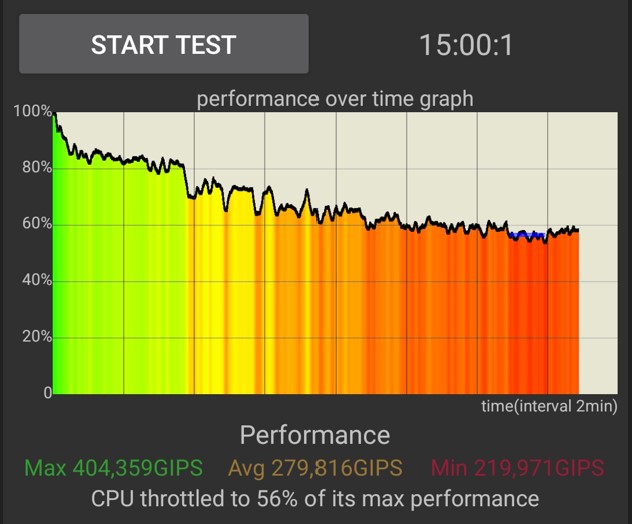
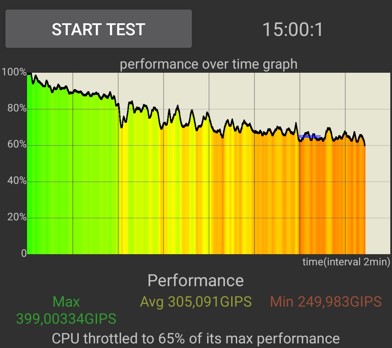
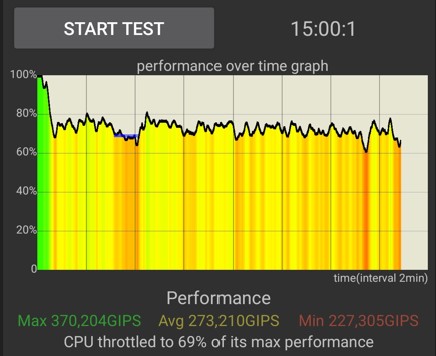
Does this matter? To a gamer, videographer, photographer, or Pro user – absolutely. It is why high-end gaming phones have things like external heat sinks or clip-on coolers. To Joe and Jane Average, probably not.
RAM – 12GB LPDDR5x – Pass+
Not to be trite, but 12GB is currently about the minimum to do any meaningful AI on-device. It is why the Google Pixel 8 Pro has 12GB and is touted as suitable for AI, whereas the Pixel 8 has 8GB for limited AI. Similarly, the base S24 has 8GB, but the S24+ has 12GB.
This is why, moving forward, new AI features may not work on your device.
Storage – 256/512GB or 1TB UFS 4.0 – Pass
UFS 4.0 is the fastest, but there are so many extra Samsung apps installed that free storage is only <206GB. Part of the issue is that Samsung wants you to use their Apps – mail, calendar, contacts, browser, photos, files, phone, camera, and so much more. These duplicate standard Google Apps so you can remove many of these, but it won’t save much space.
Tests (S23U in brackets)
- CPDT sustained read/write 2220/1220MBps (1540/459)
- CPDT sustained external 2TB SSD – Files could see it for OTG Cut and Paste only
- Jazz Disk peak sequential read/write: 3011
- Jass Disk external peak sequential: Files could see it for OTG Cut and Paste only
It loses storage points as, for reasons unknown, Samsung persist in not allowing external live mountable flash or SSD drives. This means videographers, photographers and power users need to look elsewhere.
Comms – Pass+
It has Wi-Fi 7 BE to connect to 2.4/5/6GHz bands at a maximum of 2402/2402Mbps full duplex (same speed up and down).
We ran exhaustive 5 and 6Ghz tests with the latest TP-Link Archer BE800 Wi-Fi 7 Tri-Band BE19000 router.
The results are interesting when compared to the Samsung Exynos processor Google Pixel 8 Pro (also Wi-Fi 7). In all cases, it beats the Pixel by a fair margin. What we discovered was that the 6GHz band is extremely variable and majorly affected by distance whereas 5GHz was far more reliable and consistent even out to 15m. Read, Wi-Fi 7 BE – what it means to you.
In summary (-dBm – lower is better and Mbps – higher is better)
- 6GHz from -39/1921 at 2m to -69/264 at 5m through two walls and built-in cupboards.
- 5Ghz from -29/2088 at 2m to -59/978 at 5m.
- GPS is a new triple-band L1/2/5 with a 3m accuracy.
- BT 5.3 is multi-point.
- USB-C 3.2 Gen 1 5Gbps with Alt DP audio/video/data/charge for DeX (1080p only) and screen mirror but not for mountable external drives.
4/5G – Pass
The new X75 modem is DSDA (dual sim/dual active), which means you can use both at once (voice on one and data on the other). It comes with a single nano-SIM and eSIM.
It loses points as, for the first time, the Samsung Galaxy S23 Ultra has not won the best signal strength award – in fact, it is down on the S23U and S22U. It found the first three towers at usable speeds but not the fourth that our reference S23U and OPPO FindX5 Pro (no longer made) did.
- DL/UL/millisecond ping: 39.6/12.2/52.2ms.
- Tower 1 varied between -84 and -90dBm (lower is better) and 4pW to 1pW.
- Tower 2 varied between -92 to -105 and 631fW to 31.6fW
- Tower 3 varied between -86 to -104 and 2.5pW to 39.8fW
- Tower 4 – no.
We know the X75 modem is the most capable we cannot help but feel that Samsung’s reduced antenna count (6 versus 8 on the OPPO FindX5 Pro) is responsible. Still, the performance should be good in city, suburbs and regional areas where there is good tower coverage. Update: After this review was published the S24-series received Telstra Blue Tick for rural use. While we cannot argue the point we feel that the best phone should have the best reception strength. In case you are wondering there are no Apple iPhones in the Bluetick List.
Battery – Pass
The Qualcomm SD8 Gen 3 has a lower power use profile and, mated with the 8-bit screen, should have good battery stamina. And it does, but it loses points because it burns twice as much energy as the S23U under load.
And second, we must remind you that Samsung does not provide its 20V/2.25A/45W charger – bad Samsung. Using any other brand of PD/PPDS 3.0 charger tends to charge at 9V/3A/27W (not 45W). We were unable to buy the $69 45W charger, and the $99 Trio 65W does have 20V/2.25/45W but costs $99. Using the Belkin BoostCharge Pro 108W 4-port GaN wall charger, we achieved 1 hour and 31 minutes for a 0-100% charge. More walled garden if you want to get the fastest charge.
Similarly, if you don’t use Samsung’s $109 9V/2.77A/25W Qi wireless charger, you will be lucky to get 5-10W Qi charging. Using Belkin BoostCharge 15W WIB002 Qi wireless charger, it took 10 hours on the Fast QI Wireless Charge setting. That does not happen with other brands.
There are a few niggly issues, too – and Samsung is not alone. It advertises a 5000mAh/19.4Wh battery. It supplies a 4885mAh/18.5Wh battery. This incessant habit of rounding up is just wrong.
Update: 7/3/24. DXOMARK has just completed its proprietary battery tests, and the S24U battery score is 130 – 56th in the ratings and well behind the S23U at 142. Our tests reveal that it chews vastly more power under load, and part of that is the AI overhead that the S23U does not have.
Tests (S23U in brackets where applicable)
- Video Loop 1080p, 50% audio/brightness/aeroplane mode: 23 hours 23 minutes (25 hours 21 minutes)
- PC Mark Modern Office battery test: 17 hours 10 minutes (17 hours 45 minutes)
- Accubattery battery life: 17 hours 49 minutes (same)
- GFX Bench Manhattan game: Would not run (same)
- GFX Bench T-Rex game: 546 minutes/6726 frames (481/6713 frames)
- Drain 100% load: 7 hours 4 minutes (6 hours)
- Accubattery drain test: 6.5 hours (4 hours 57 minutes)
- Idle mA: 285-350mA (250-350mA)
- Load mA: 1500-1750mA (650-700mA)
Estimate of battery life
It has better battery figures than the S23U, but there are some interesting inconsistencies that may be firmware addressable. It should give at least one day for heavy users and up to two days for light users. But, under load, it consumes 1500-1750mA compared to the S23U at 657-700mA.
Speakers – Pass
It has the same system as the S23U – an AKG-tuned stereo earpiece and a down-firing speaker at the bottom. It reaches 80dB – reasonably loud.
Bluetooth 5.3 is strictly 16-bit/44,100Mhz and has SBC, AAC, royalty-free aptX, LDAC and SSC (Samsung scalable Codec). It is fine for earphones where LDAC can give better fidelity. SSC is only for Samsung-compatible buds. It has good volume and left/right separation.
It can decode Dolby Atmos (DA) to its 2.0 speakers, which adds a slightly wider soundstage but no 3D spatial height. It has the usual DA pre-sets. There is another non-DA EQ as well, too, but it can only recess frequencies, not add to them.
Hands-free is excellent with three mics (one for noise cancelling), as is video sound recording.
How does it sound? – Passable
Somehow, Samsung has made the sound worse than the S23U by even later mid and a recessed high treble – disappointing for a premium handset. We understand that it is hard to get bass from small speakers, but you expect it to have at least decent 100-200Hz high bass, where all the musically important bass comes from. It should be easy to get decent mid-high-treble that gives a feeling of air and directionality, but instead, we get an odd treble that gives music a tinny harshness.
It has a mid sound signature. No low-mid-bass (typical for a phone), slowly building high-bass (needed for music but not nearly enough), slow-building and late low-mid-mids and a very narrow flat (good) from 1-6kHz for clear voice. The treble is all downhill, which sucks the life out of music.
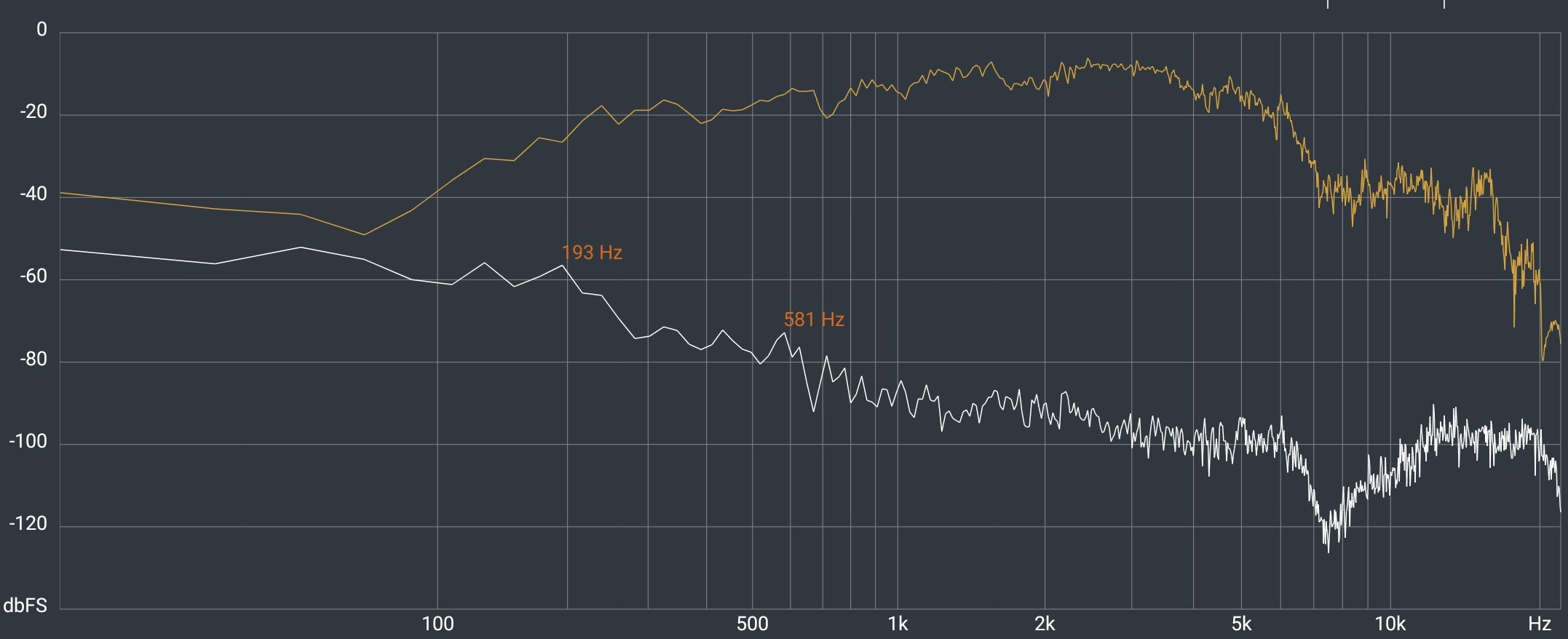
The S23U was better suited with a Bright Vocal sound signature. As these use essentially the same speakers and amps, they should be firmware-fixable.
Build – Exceed
It is pretty well the same as the S23U in size (162.3 x 79 x 8.6 x 232g) but with a flat-screen (instead of slight edge curves), and the frame is evident from the screen.
It is IP68 rated – 1.5m for 30 minutes with the usual caveats that water ingress may not be covered by warranty.
The S-Pen is part of the Ultra and, as usual, has interesting uses, from screen-off notes to the new ‘Circle to Search with Google’.
Gorilla Glass Armor and the Titanium frame make it a keeper but use a bumper case to protect the lens turrets from scratches
The warranty is two years. Inbox is the phone and a 1m 3W USB-C to USB-C cable.
Android – Update policy – Exceed
Samsung threw down the gauntlet to challenge other makers by offering seven OS upgrades and seven years of security patches. For that reason alone, it is an excellent buy and should maintain resale values.
Whether that is valuable or even possible in seven years’ time (S31 Ultra by then) is yet to be seen as a lot depends on Android and its support of what will then be old legacy hardware. At best, everything will work, but at worst, the tech will have gotten so far ahead that the phone will not be physically capable of running Android 21. Never mind, it is the thought that counts.
But as a long-term user of Samsung and its UI (user interface), I am concerned at the apparent propensity to bolt on extra features often buried several layers down in settings. AI, for example, is buried three levels down (for starters) under System, Advanced Features, and Advanced AI. Then, you must sign into your Samsung Account to go further.
Samsung also wants you to use its apps like phone, browser, files, keyboard, messages, contacts, camera and much more instead of Google Apps. There is nothing wrong with Samsung apps except that they tie you into its ecosystem and have additional privacy provisions over Google Apps.
Bottom line: It makes it extremely difficult to transfer to a new non-Samsung phone. Read, Want a new Android phone? Old Android to Android 13 is easy. Again, Samsung follows in Apple’s walled-garden footsteps.
Samsung Galaxy S24 Ultra Camera
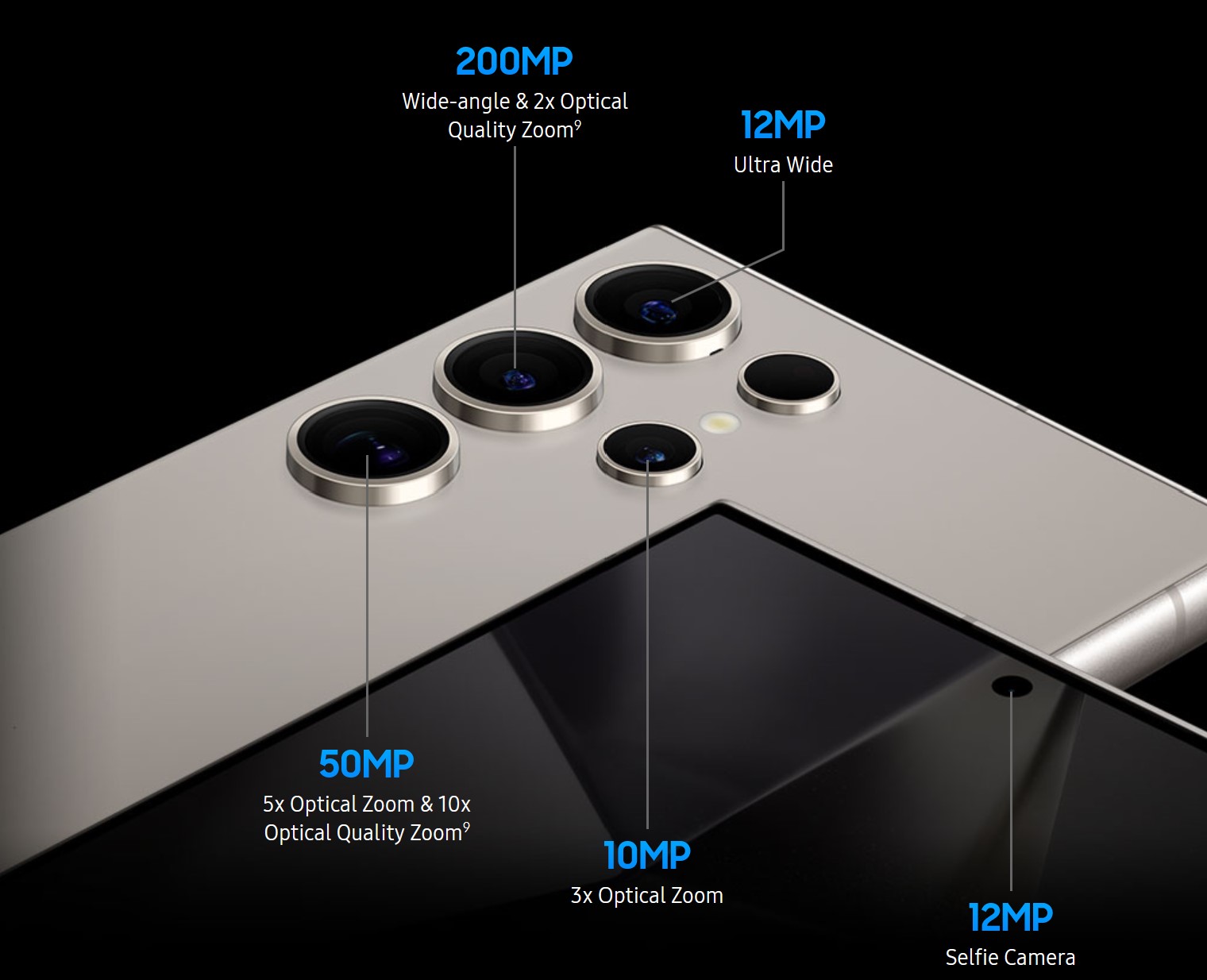
It uses the same 200MP wide, 12MP ultra-wide and 10MP Telephoto 1 as the S23U. The difference is that the Telephoto 2 is a 50MP binned to 12MP cropped with a 5X optical zoom (S23U 10X). And we have the additional post processing and AI power of the Qualcomm SD8 Gen 3.
DXOMARK does not rate THE Samsung Galaxy S24 Ultra as class-leading
DXOMARK (industry standard) rated the S24U at 18th with 144 points. It was soundly beaten by iPhone 15 Pro Max (154), iPhone 15 Pro (154), Google Pixel 8 Pro (153), OPPO Find X6 Pro (153), OPPO FindX6 (150), Google Pixel 8 1(48), Google Pixel 7 Pro (148), iPhone 14 Max (146), and iPhone 15/Plus (145).
In comparison, the S23U scored 140 and the S22U 135, so there is an incremental improvement.
DXOMARK said it was generally good but let down by autofocus speed, noise, exposure, loss of detail in low light, shallow depth of field, colour accuracy, and texture. Some of these have been fixed in a recent firmware update. Still, it is a disappointing result for Samsung.
Sample shots
We took the same shots with the S23U and S24U (forgive the abysmal weather – we will update these when we can), and you can be the judge. S23U is on the left, and you can click to enlarge it (use the browser back arrow to return to the review).
These screenshots below show a considerable difference between the same shot below (taken within a second of the screenshot). It is all due to Samsung using an 8-bit/16.7m AMOLED panel, yet the images are 10-bit/1.07 billion colours. You will also notice a slight framing size field of view difference.
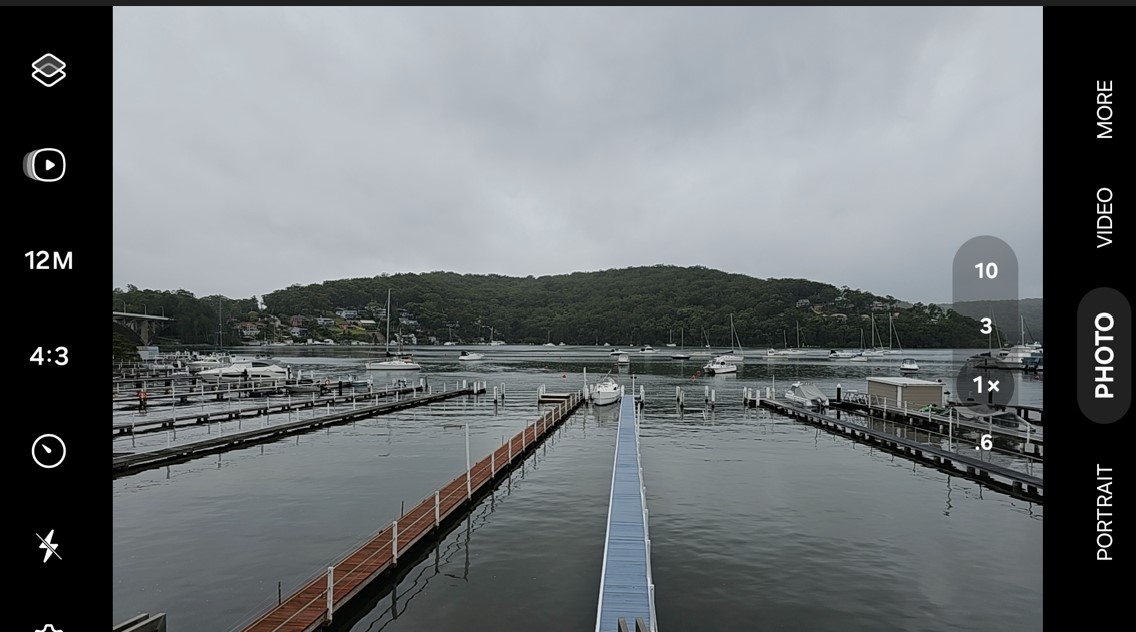
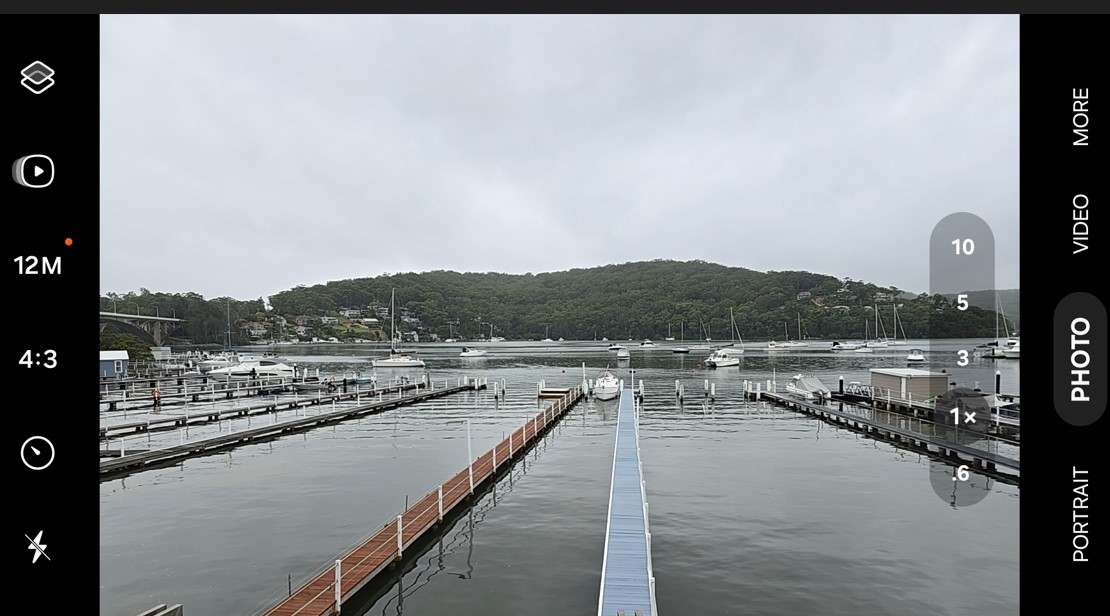


Below are both 3X zoom, and apart from the framing difference, the S24U has more detail.


Below is 5X zoom


30X, and the S23U is ahead on colour but not detail.


100X, and the 23U is ahead on clarity and colour.
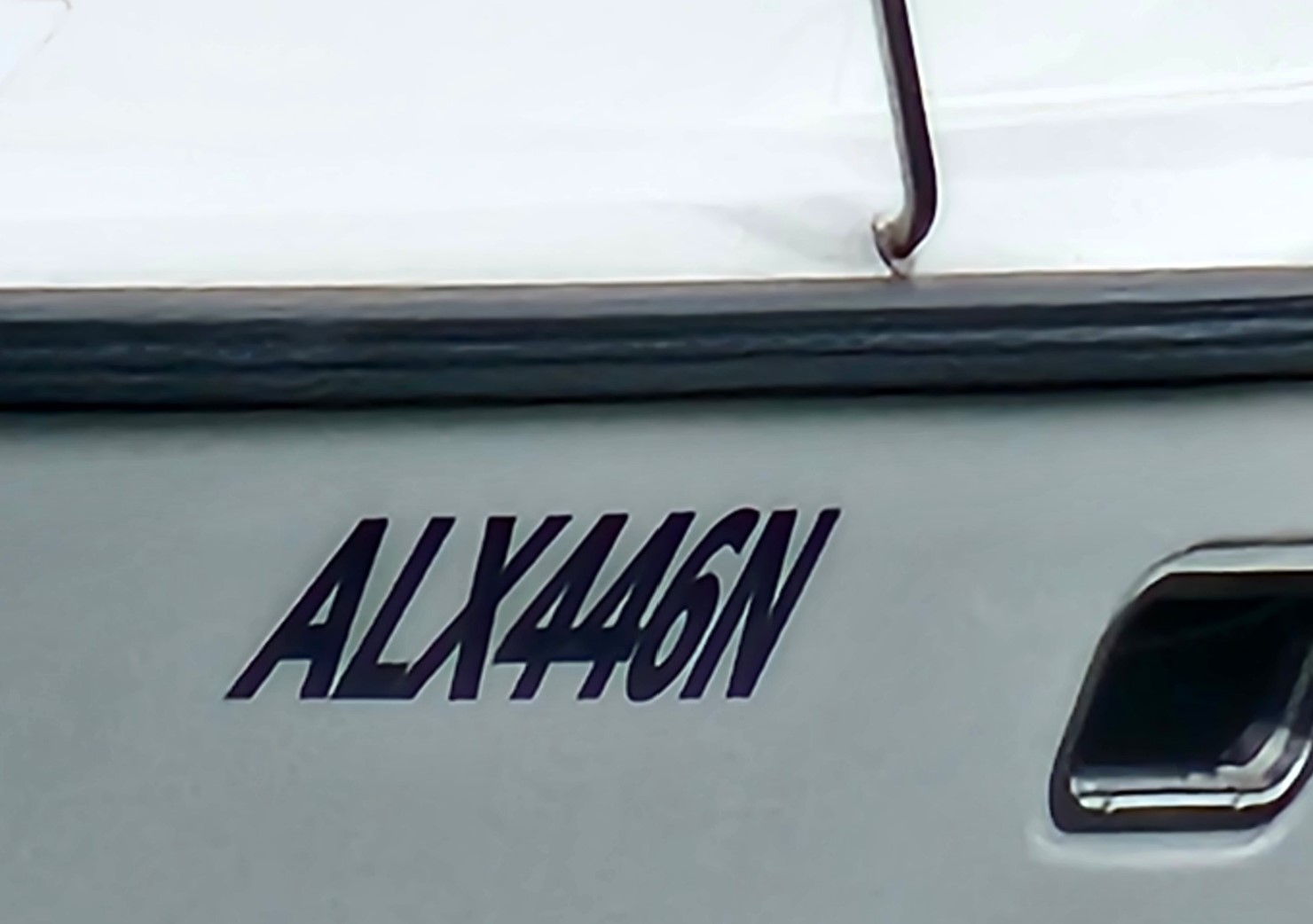
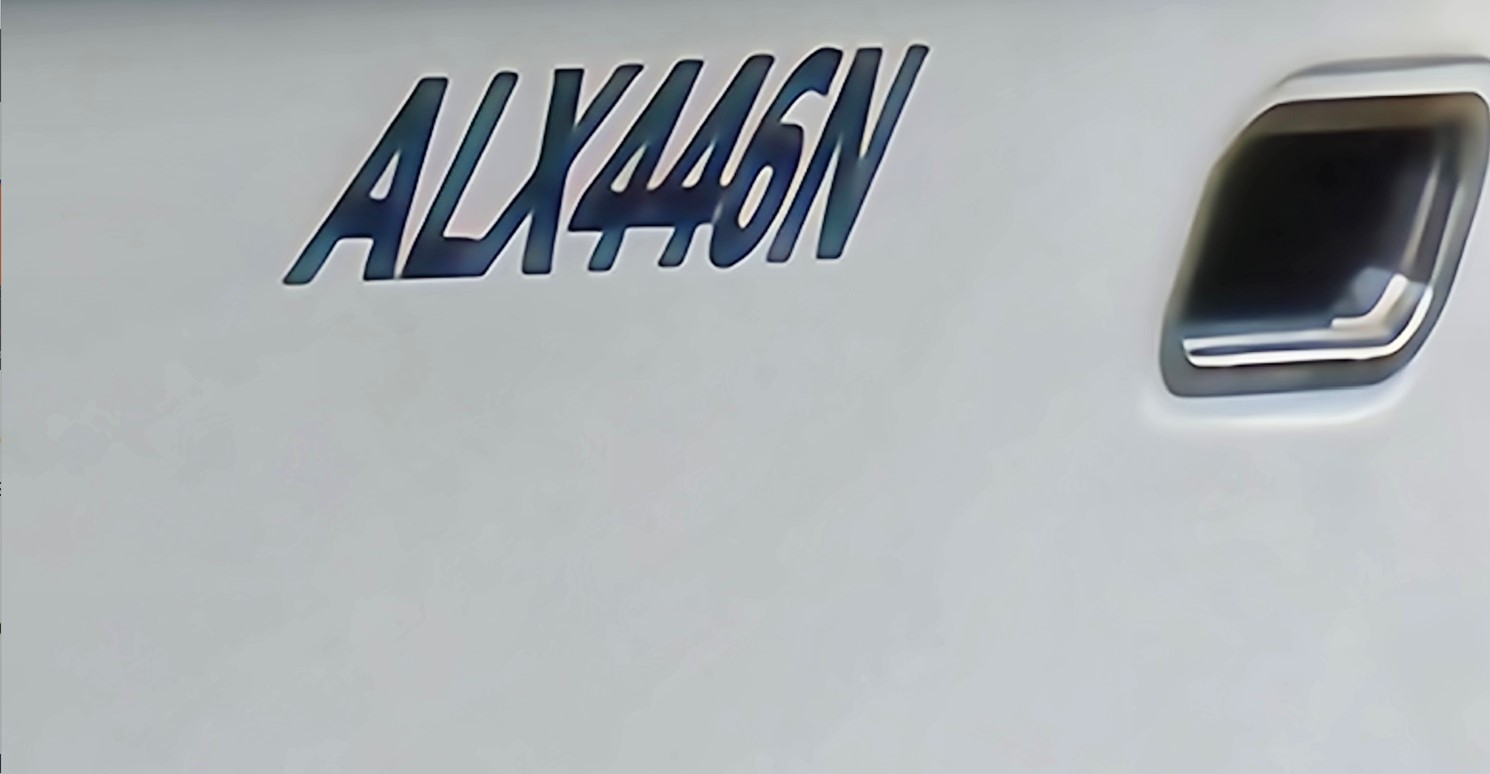
Neither has a dedicated macro mode, but it does a good job with the primary sensor.
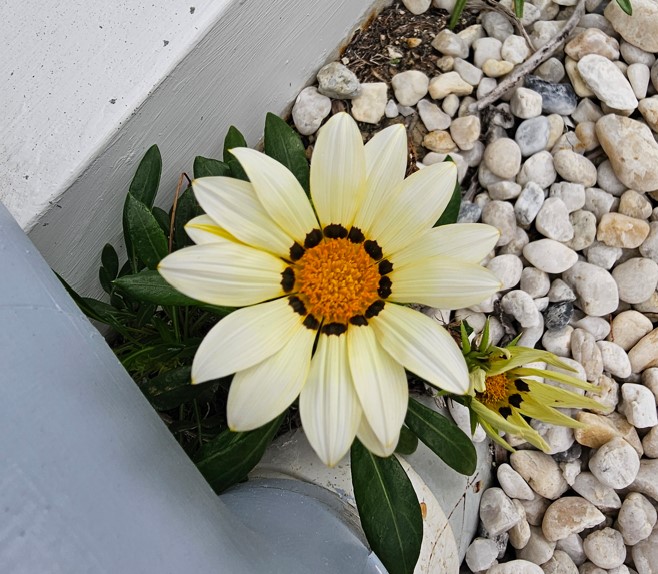

Office light and the S23U is slightly ahead on colour saturation and the toy dog’s black face.


Bokeh – both are pretty similar, but the S24 has slightly better foreground and background definition at the expense of colour accuracy.


The S23U aces <40 lumen light. Use the slider to compare how washed out the S24U (Right) is
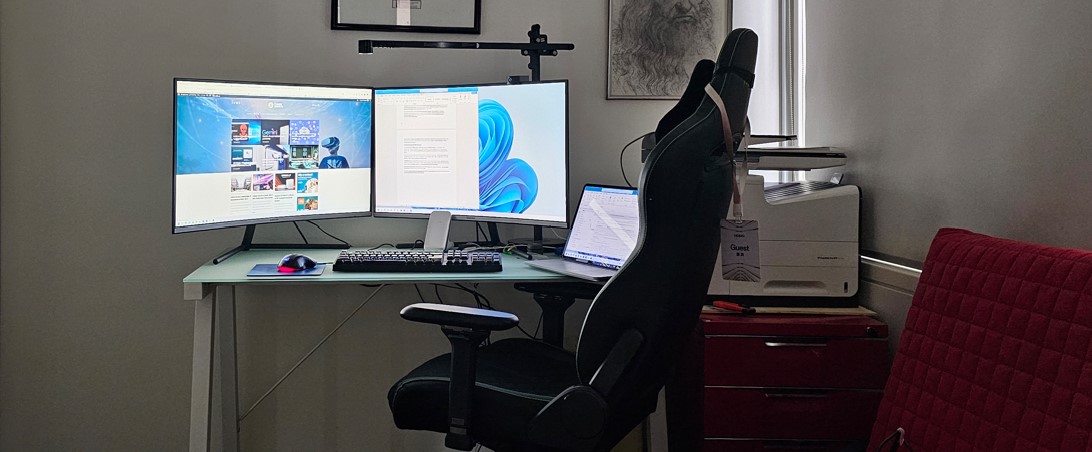
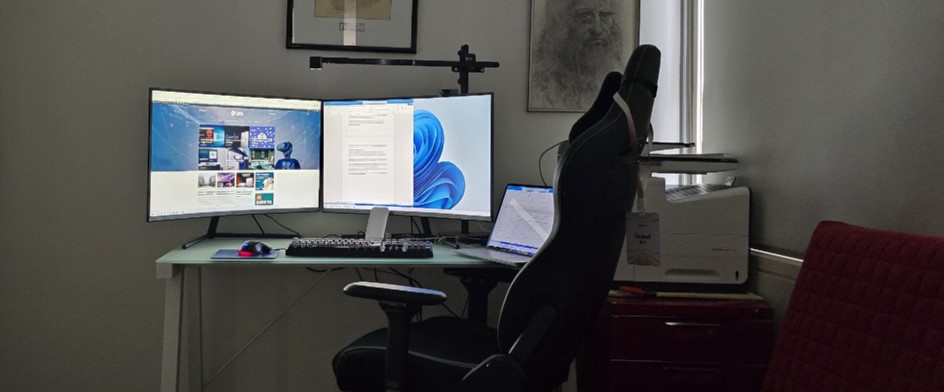
The S24U shows better Night mode, but frankly, the S23U < 40-lumen standard mode aces them all.
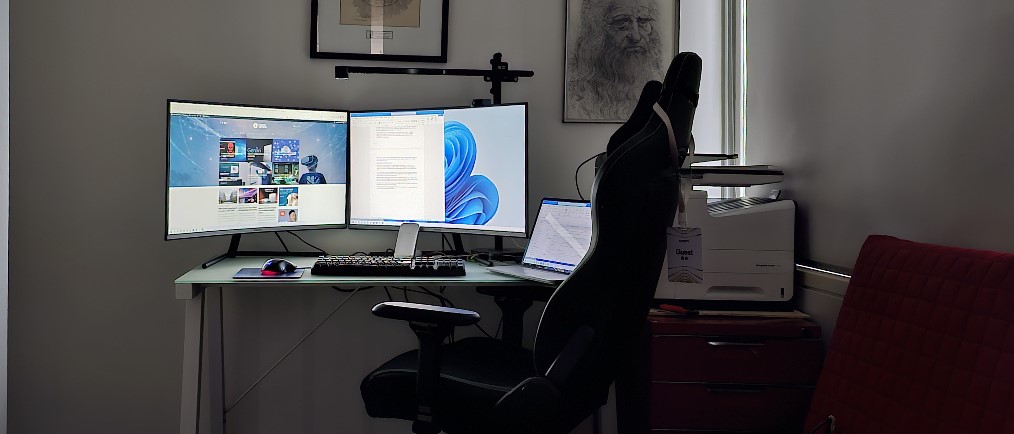
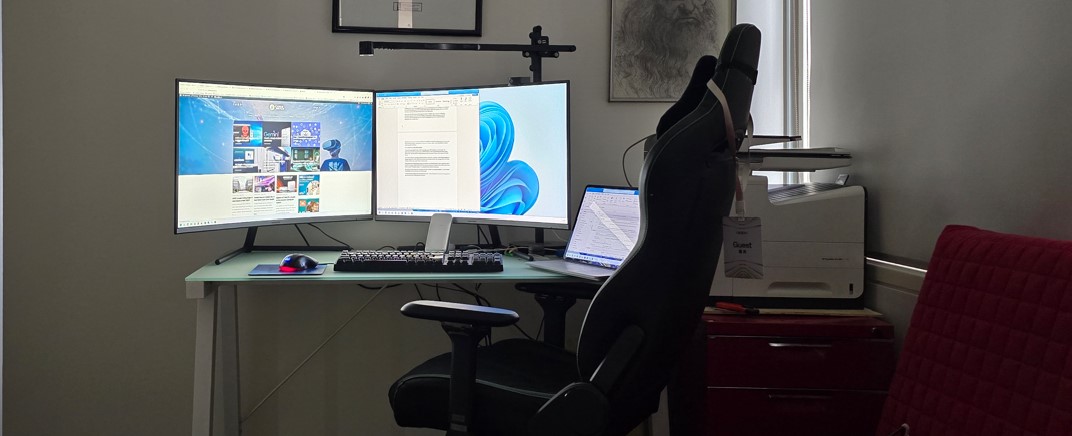
And Samsung’s Magic Eraser – cloud editing – Fail. To be fair, the same photo on a Google Pixel 8 left a black hole.


Samsung Galaxy S24 Ultra general camera comments
There is no doubt that it is an excellent camera with significantly more features than most. The fact that the DXOMARK score is so much lower than its competition shows Samsung has a lot of work to do on it is camera app and AI smarts.
You cannot help but be impressed with the zoom function, yet in most zoom shots, I preferred the S23U.
CyberShack’s view – The Samsung Galaxy S24 Ultra is its best smartphone, yet it falls down in some critical areas.
Let’s narrow this device’s target market appeal down a little. At $2199 to $2799, you will likely be buying it as a trade-in deal, on a Telco plan, or as a business tax deduction. You will buy it because apart from the Galaxy Z Fold 5 screen estate, it is supposed to be superior in every aspect.
Yet, it is kind of a two-step forward and one-step backward device – at least with current firmware. I find it unacceptable that the screen image preview differs so markedly from the finished shot. That does not happen with OPPO or Motorola, for example, as they use a superior 10-bit/1.07 billion colour screen. Does it matter? Your call.
Throttling is unacceptable – to lose 40-50% within scant minutes of load should not happen. Other brands can get that throttling down to <10%. Does it matter? To gamers and power users, it does.
The fact that you cannot mount external live SSD storage (and never have been able to with Samsung) puts this out of contention with videographers, photo editors and vloggers.
A premium phone needs premium phone reception. I could not believe it when the S23U scored better. Other Qualcomm SD8 Gen 3 X75 modem phones have stronger reception. Hell, my 2022 OPPO FindX5 Pro with Qualcomm SD8 Gen 1 has a far stronger signal reception.
continued
But worst of all, I don’t know why Samsung engineers, who must be aware of these issues, don’t get off their collective backsides and fix them.
And maybe I will change my mind about AI, but so far, I have been unimpressed. Live translation is nice (and is done on-device), but the majority requires an active and fast internet connection to perform AI ‘tricks’ in the cloud. And I object to the potential to have to pay a subscription (unknown amount) for certain (unannounced) AI features from the end of 2025.
We now include privacy notices and terms in all reviews. We would be remiss not to point out the massive privacy implications of accepting all of Samsung’s seven legal ‘policies’ totalling 25,214 words, just to use a phone and AI services. That is on top of Google Android policies, any app policies, and Microsoft 365 and OneDrive if you use those for backup. The Samsung policies are at the end of this review, and maybe one day, someone who understands legalese and privacy might analyse them.
Samsung Galaxy S24 Ultra rating – 85/100
We have to rate it as a $2,000+ phone and, to a large extent, use ‘speeds and feeds’ to address performance. We do not yet have an AI category, but if we did, it would say, ‘Interesting marketing strategy, but does it sell phones, and will all users embrace it?
Rating
- Features: 90 – latest processor, stylus, Gorilla Armor glass and more. It loses points for the 8-bit screen and no charger.
- Value: This is hard. For the sake of a rating, let’s give it 80. There is no real Android competition except the Samsung Galaxy S23 Utra (which is getting some AI), and I would be driving a hard bargain for that at present. I am not qualified to compare it with the iPhone. Currently, if you want a better camera, the Google Pixel 8 Pro (between $1699 and $1999) is the best choice, and it has similar AI features. If we had the OPPO Find X7 Pro, One Plus 12, or Motorola’s yet-to-be-announced Edge 50 Pro, these would all give the S24U a real run for its money (Stylus is the only unique feature).
- Performance: Again, hard. 85 – You expect 100/100, but it limps along with massive throttling, less-than-perfect phone reception, slow AI, image preview mismatch screen, and more. There is no doubt that it is the fastest processor at present, but the S23U delivers better performance under throttling.
- Ease of Use: 80 – Excellent 2+7+7 warranty/OS/patches, but Samsung UI 6.1 is getting overblown and multi-layered, being forced to use Samsung Apps to access AI (instead of Google, which all Android users are familiar with), and the complex, onerous and extraordinarily lengthy terms are beyond all but the lawyers.
- Design: 90 – I like the flat screen over the curved edge S23U, but the design is three generations old. Apple gets pilloried for its tick (new), tock, tick, tock (minor changes) design and Samsung runs that same risk.
Final Comment
It is a big, bold, heavy phone with the latest tech (apart from the 8-bit screen) that should be an aspirational purchase for all those who can afford it. It has an incredible OS upgrade and security update policy. My opinion is that Samsung needs to take a deep breath, get back to the basics of making the best phones, and reassess what it is here for. At present, none of its range is class-leading.
Pro
- Less reflective flat Gorilla Armor and a bright display.
- Battery life is good but not under load.
- S Pen add value if you use it
- The camera is good but not class-leading. Needs more work.
Con
- Samsung needs to lose the inaccurate image preview 8-bit display.
- Charging speed is not class-leading, and fast charging needs a Samsung charger.
- One UI getting overly complex and deeply layered.
- AI can be very slow and only for Samsung Apps.
- Samsung’s ecosystem is heading toward Apple’s walled garden.
Jerryrig teardown
PBk teardown.
CyberShack Smartphone comparison v 1.02.24 (E&OE)
Samsung Galaxy S24 Ultra
| Brand | Samsung |
| Model | Samsung Galaxy S24 Ultra |
| Model Number | SM-S9238B |
| Price Base | 2199 |
| Price base | 12/256 |
| Price 2 | 12/512GB $2399 |
| Price 3 | 12GB/1TB $2799 |
| Price 4 | |
| Warranty months | 24 |
| Tier | Upper Premium |
| Website | Product page |
| Manual | |
| From | Samsung Online and approved retailers |
| Country of Origin | Vietnam |
| Company | Samsung is a South Korean multinational manufacturing conglomerate headquartered in Samsung Town, Seoul, South Korea. Samsung Electronics is the world’s largest information technology company, consumer electronics maker and chipmaker. |
| More | |
| Test date | 15-26/2/24 |
| Ambient temp | 25° |
| Release | 45292 |
| Other models not for Australia (Don’t buy) | Do not buy 928 followed by U (US), U1 (US), W (Canada), N (Korea), E (Latam) or 0/nothing (China). DS means Dual Sim, and these are not for Australia. |
Screen
| Size | 6.8″ |
| Type | LPTO AMOLED 2X |
| Flat, Curve, 2D, 3D | Flat – Level 7 Mohs. |
| Resolution | 3120 x 1440 but defaults to 23240 x 1080. |
| PPI | 505 |
| Ratio | 19.5:9 |
| Screen to Body % | 0.885 |
| Colours bits | 8-bit/16.7m |
| Refresh Hz, adaptive | 1-120MHz screen and 240MHz touch in game mode only |
| Response 120Hz | It is not stated, but it is approximately 2ms GTG. |
| Nits typical, test | Not stated Test Auto-brightness off 750 Test AB on 1300 |
| Nits max, test | 2600 peak for HDR10+ in 2% of the screen (Test 2400) |
| Contrast | Infinite |
| sRGB | Natural mode 115% Vivid Mode 135% |
| DCI-P3 | Natural mode 85% Vivid mode 98% |
| Rec.2020 or other | Cool to warm temperature adjustment. |
| Delta E (<4 is excellent) | Vivid mode 2.2 (higher than expected) |
| HDR Level | It plays up to HDR10+, locking refresh rate to 120Hz. Samsung does not support Dolby Vision on any of its devices. |
| SDR Upscale | No |
| Blue Light Control | Yes |
| PWM if known | PWM between 250 and 492Hz |
| Daylight readable | Yes |
| Always on Display | Yes |
| Edge display | Yes |
| Accessibility | Full suite of enhancements |
| DRM | Widevine L1 1080p HDR. We noticed banding in gradient colours. testmyscreen.com |
| Gaming | Game mode |
| Screen protection | Gorilla Glass Armor 4x more scratch resistance and less reflection. Same drop protection as GGV2. |
| Comment | It is disappointing that it is not 10-bit/1.07B colours, but as it does not need to support Dolby Vision, then it is okay. This has a true adaptive screen that ranges from 1-120Hz to help conserve battery. Screen colours are more natural, but people want saturated. Samsung acknowledges screen issues. |
Processor
| Brand, Model | Qualcomm SD8 Gen 3 |
| nm | 4nm made by TSMC (not Samsung) |
| Cores | 1 x 3.39GHz & 3 x 3.1GHz & 2 x 2.9GHz & 2 x 2.2GHz |
| Modem | X75 4×4 MIMO Sub-6Ghz |
| AI TOPS | CPU TOPS is undisclosed, but the AI engine has 29+ TOPS, NPU has 15 for over 60 |
| Geekbench 6 Single-core | 2198 |
| Geekbench 6 multi-core | 6728 |
| Like | Benchmarks https://www.notebookcheck.net/Qualcomm-Snapdragon-8-Gen-3-Processor-Benchmarks-and-Specs.762133.0.html |
| GPU | Adreno 750 (1GHz) |
| GPU Test | |
| Open CL | 12316 |
| Like | |
| Vulcan | 14339 |
| RAM, type | 12GB LPDDR5X |
| Storage, free, type | 256GB UFS 4.0 512GB and 1TB option. |
| micro-SD | No |
| CPDT internal seq. Read MBps sustained | 2220 Jazz 3011 |
| CPDT internal seq. write MBps sustained | 1130 1459 |
| CPDT microSD read, write MBps | N/A |
| CPDT external (mountable?) MBps | Won’t test – seen as external storage but can’t mount as internal storage |
| Comment | Videographers and vloggers will soon run out of space without mountable storage, seen as internal storage. |
| Throttle test | Test 1/Test 2/Test 3 different days. |
| Max GIPS | 399,003/370,204/404,359 |
| Average GIPS | 305,091/273,210/279,816 |
| Minimum GIPS | 249,983/227,305/219,971 |
| % Throttle | 25/39/44% |
| CPU Temp | |
| Comment | Massive, if not unacceptable, thermal throttling. Test 1 was at 22° ambient in air-conditioning, and Test 2 was at 25° outside after taking about ten photos. Test 3 was after the firmware update in 22° with no significant use beforehand. A standard performance profile is used, not Games Booster. |
Comms
| Wi-Fi Type, model | Wi-Fi 7 2.4/5/6Ghz 4K QAM, 320MHz |
| Test 2m -dBm, Mbps | -39/1921 6GHz -29/2088 5GHz |
| Test 5m | -69/264 6GHz -59/978 5GHz |
| Test 10m | -57/1152 6GHz -51/1090 5GHz |
| BT Type | 5.3 |
| GPS single, dual | Triple frequency L1/2/5 |
| USB type | 3.2 Gen 1 (5Gbps) DP 1.2 |
| ALT DP, DeX, Ready For | Cable (1080p only) and Wireless Dex |
| NFC | Yes |
| Ultra-wideband | Yes |
| Sensors | |
| Accelerometer | Yes |
| Gyro | Yes |
| e-Compass | Yes |
| Barometer | Yes |
| Gravity | |
| Pedometer | |
| Ambient light | Yes |
| Hall sensor | Yes |
| Proximity | Yes |
| Other | |
| Comment | Fingerprint sensor |
4/5G
| SIM | Single SIM and eSIM DS Dual SIM is not for Australia. |
| Active | DSDA – dual SIM dual active data |
| Ring tone single, dual | Single SIM |
| VoLTE | Carrier dependent |
| Wi-Fi calling | Carrier dependent |
| 4G Bands | 1, 2, 3, 4, 5, 7, 8, 12, 13, 17, 18, 19, 20, 25 26, 28, 38, 39, 40, 41, 66 |
| Comment | All Australian and most world bands |
| 5G sub-6Ghz | N1, 2, 3, 5, 7, 8, 12, 20, 25, 26, 28, 38, 40, 41, 66, 77, 78 |
| Comment | All sub-6Ghz and 5G low bands |
| mmWave | No |
| Test Boost Mobile, Telstra | |
| UL, DL, ms | 39.6/12.2/52.2ms |
| Tower 1 -dBm, fW or pW | -84-90/4-1pW |
| Tower 2 | -92105/631-31.6fW |
| Tower 3 | -86-104/2.5pW-39.8fW |
| Tower 4 | No |
| Comment | It did not have as strong a signal as expected and would not find the fourth transmission tower. It does not have Telstra Bluetick either. Suitable for city, suburbs and regional use with good tower coverage. |
Battery
| mAh | 5000mAh 19.4Wh EB-BS928ABY approx cost EUR30 (A$50) Actually 3.88V/4885mAh/18.85Wh Claim video loop 30 hours We suspect it is a 500 full recharge cycle battery. |
| Charger, type, supplied | No charger supplied. Samsung advises that Super Fast Charging 2.0 must be enabled under Battery (off by default) and use its 45W charger and a 5W cable (20V/2.25A/45W). At the time of review, Samsung AU did not have any and could not provide a price or availability. |
| PD, QC level | 45W PD 3.0 capable Using a Belkin 100W GaN charger, it tends to charge at a maximum of 9V/3A/27W. |
| Qi, wattage | QC 1.0 (should have been 2.0) Requires Samsung Qi charger to achieve best charge speed. |
| Reverse Qi or cable | 4.5W |
| Test (60Hz or adaptive screen) | Adaptive |
| Charge % 30mins | Claim 69% |
| Charge 0-100% | It took 1 hour 31 minutes using a Belkin 100W GaN desktop charger. Claim 65 minutes SuperFast charge with Samsung’s charger. |
| Charge Qi, W Using Belkin Boost Charge 15W fast wireless charge | 10 hours using a Belkin 15W BoostCharge. Setting Fast Wireless charge. We can only assume that Samsung only accepts 9V/2.77A/25W from its charge pad. |
| Charge 5V, 2A | |
| Video loop 50%, aeroplane | 23 Hours 23 minutes |
| PC Mark 3 battery | 17 hours 10 minutes Accubattery 17 hours 49 minutes |
| GFX Bench Manhattan battery | Out-of-memory error |
| GFX Bench T-Rex | 546 minutes 9.1 hours) 6726 frames |
| Drain 100-0% full load screen on | 7 hours 4 minutes Accubattery 6.5 hours |
| mA full load | 1500-1750mA |
| mA Watt idle Screen on | 285-350mA |
| Estimate loss at max refresh | Used Adaptive so there should not be a significant difference to fixed 60Hz. |
| Estimate typical use | One work day for heavy users. One full day for typical users. |
| Comment | Using 65W or 100W PPS GaN Chargers, the charging wattage never exceeded 27W. Carry a charger (shame Samsung does not provide one). |
Sound
| Speakers | Stereo – top earpiece and bottom down-firing. |
| Tuning | Not specified – probably AKG |
| AMP | Cirrus Logic CS40l26 2.0 x 5W @1% THD+N, into 6 ohms that also drives the screen haptics. |
| Dolbly Atmos decode | Yes, downmix to two speakers. |
| Hi-Res | 32-bit, 384kHz |
| 3.5mm | No |
| BT Codecs | SBC, AAC, free aptX, LDAC and SSC (Samsung scalable Codec). 16-bit/44100MHz |
| Multipoint | Can connect to two devices |
| Dolby Atmos (DA) | Yes – auto, movie, music, voice and games mode |
| EQ | Normal, Pop, Classic, Jazz, Rock and Custom – makes more of a difference in headphones as inbuilt speakers limit what it can do. |
| Mics | 3 – with background noise suppression and stereo zoom-in recording |
| Test dB – all on EQ flat DA off | |
| Volume max | 80 |
| Media (music) | 80 |
| Ring | 82 |
| Alarm | 80 |
| Notifications | 80 |
| Earpiece | |
| Hands-free | Good hands-free with noise cancellation. |
| BT headphones | Excellent left-right separation and DA makes quite a difference with DA content. |
Sound quality
| Deep Bass 20-40Hz | No |
| Middle Bass 40-100Hz | No |
| High Bass 100-200Hz | Building |
| Low Mid 200-400Hz | Still building |
| Mid 4000-1000Hz | Beginning to flatten |
| High-Mid 1-2kHz | Flat |
| Low Treble 2-4kHz | Flat |
| Mid Treble 4-6kHz | Flat |
| High Treble 6-10kHz | Steep decline to 7kHz |
| Dog Whistle 10-20kHz | flat to 14kHz, then steep drop |
| Sound Signature type | This is worse than the S23U in that mids come up later; mid/high treble is all wrong. It is mainly Mid: (bass recessed, mid boosted, treble recessed) – for clear voice but not for music as it has no bass and music feels flat – no air or vitality. |
| Soundstage | 2D is about as wide as the phone with no apparent bias to one speaker. DA gives it a slightly wider 10cm soundstage but no 3D height. |
| Comment | Disappointing for a premium handset. It is hard to get bass, but you expect it to have at least some 50-100Hz, where all the musically important bass comes from. It is easy to get decent mid-high-treble that gives a feeling of air and directionality, but instead, we get an odd treble that gives music a harshness. |
Build
| Size (H X W x D) | 162.3 x 79 x 8.6 mm |
| Weight grams | 233 |
| Front glass | Gorilla Glass Armor |
| Rear material | Gorilla Glass Armor |
| Frame | Titanium Teardown https://youtu.be/nyxcO2vdcCg |
| IP rating | IP68 1.5m for 30 minutes |
| Colours | Retail: Titanium Grey, Violet, Black, Yellow Online: Titanium Blue, Green, Orange |
| Pen, Stylus support | Yes – 3.4g, 4-96 pressure levels, 2.8ms latency Inbox and 88 language translation support |
| In the box | |
| Charger | No |
| USB cable | Very short USB-C to USB-C 3W |
| Buds | No |
| Bumper cover | No |
| Comment | Stylus included. Gorilla Glass Armor and the Titanium frame make it a keeper, but use a bumper case to protect the lens turret from scratches. |
OS
| Android | 14 |
| Security patch date | February 24 |
| UI | One U1 6.1 |
| OS upgrade policy | 7 years |
| Security patch policy | 7 |
| Bloatware | Samsung alternative to Google Suite. Microsoft Suite and OneDrive (requires subscription) |
| Other | Selection of Galaxy Apps |
| Comment | Great upgrade policy. One UI is becoming increasingly bloated and complicated to use; it has AI bolted on. Also, multiple privacy and term policies for the phone, Samsung account and more. |
| Security | |
| Fingerprint sensor location, type | Ultrasonic Under glass (9/10) |
| Face ID | 2D |
| Other | Knox and Secure folder |
| Comment | One of the more secure Android devices |
Samsung Galaxy S24 Ultra camera
| Camera | |
| Rear Primary | Wide |
| MP | 200MP bins to 50 and 12.5MP (default) |
| Sensor | Samsung S5KHP2 |
| Focus | multi-directional PDAF and Laser AF |
| f-stop | 1.7 |
| um | .6 bins to 1.2 and 2.4 |
| FOV° (stated, actual) | 75.7-88.3° |
| Stabilisation | OIS |
| Zoom | Uses telephoto sensors |
| Rear 2 | Ultra-Wide |
| MP | 12MP |
| Sensor | Sony IMX564 |
| Focus | Dual Pixel PDAF |
| f-stop | 2.4 |
| um | 1.4 |
| FOV (stated, actual) | 103.7-115.7° |
| Stabilisation | OIS |
| Zoom | |
| Rear 3 | Telephoto 1 |
| MP | 10MP |
| Sensor | Sony IMX754 |
| Focus | PDAF |
| f-stop | 2.4 |
| um | 1.12 |
| FOV (stated, actual) | 68.3-80.6° |
| Stabilisation | OIS |
| Zoom | 3X optical |
| Rear 4 | Telephoto/Periscope |
| MP | 50MP bins to 12MP cropped |
| Sensor | Sony IMX854 |
| Focus | PDAF |
| f-stop | 3.4 |
| um | .7 bins to 1.4 |
| FOV (stated, actual) | |
| Stabilisation | OIS |
| Zoom | 5X Optical |
| Special | |
| Video max | 8K@30fps |
| Flash | 1 |
| Auto-HDR | HDR |
| DXOMARK rated 18th at 144. Beaten by Google Pixel 8 Pro 153, OPPO Find X6 Pro 153, Google Pixel 8 148, Google Pixel 7 Pro 148, iPhone 14 Max 146, iPhone 15/Plus 145 Generally good but let down by autofocus speed, noise, exposure, loss of detail in low light, shallow depth of field, colour accuracy, and texture. All of which should be fixable in a camera app update—a disappointing result. Camera colours appear less saturated than S23U – more natural, but our eyes crave saturated, so it’s not quite what a Samsung user expects. | |
| QR code reader | Yes |
| Night mode | Nightography Astrography |
Samsung Galaxy S24 Ultra front camera
| Front | |
| MP | 12MP |
| Sensor | Samsung S5K3LU |
| Focus | Dual Pixel PDAF |
| f-stop | 2.2 |
| um | 1.12 |
| FOV (stated, actual) | 59.9-71.5 |
| Stabilisation | No |
| Flash | Screen fill |
| Zoom | No |
| Video max | 4K@60 |
Camera Comments
| • 1X Day Primary 200MP sensor binned to 12.5MP: The colours are saturated (do we care if it is not quite right?). Good details in the background, shadows, and highlights. • 3X Day 10MPx3: natural if slightly saturated colours, good detail and no noise • 10X Day 10MPx10: Excellent colour and foreground details. • 30X Day: Excellent clarity, but the background is very noisy. • 100X Space Zoom: At the limit of the sensor’s capability – we reshot this several times to see if we got different results. • Ultra-wide: 12.5MP sensor: Excellent shot, but you can tell it is a different sensor from the primary. • Macro: No macro but excellent details and colours and not as critical about 4cm focus distance. • Indoor office light: Good colours and good details • Bokeh Depth: Good colour, good foreground detail and bokeh background. Bokeh can be adjusted. • Dark <40 lumens: The standard mode (not night mode) is excellent, turning night into day with good colour and picking up details from the monitor screens. • Night mode: Saturates the colour (to its detriment) and adds missing details. • Selfie: The 12MP produces an 8.6-10MP image depending on the Field of View (cropped). It has natural skin tones, good detail and a range of filters to enhance any image. • Video (we are not video experts): • Primary sensor: You can shoot at 8K@30fps OIS and 4K@60/30fps with OIS/EIS, and the day/office light results are excellent. • Ultrawide sensor: You can shoot 4K@30fps with OIS/EIS |
Samsung S24 Ultra ratings
| Features | 90 |
| Latest processor, stylus, Gorilla Armor glass and more. It loses points for the 8-bit screen and no charger. | |
| Value | 80 |
| There is no real Android competition except the Samsung Galaxy S23 Utra (which is getting some AI), and I would be driving a hard bargain for that at present. I am not qualified to compare it with the iPhone. If you want a better camera, the Google Pixel 8 Pro (between $1699 and $1999) is the best choice, and it has similar AI features. If we had the OPPO Find X7 Pro or One Plus 12 Motorola’s yet-to-be-announced Edge 50 Pro, these would all give the S24U a real run for its money (Stylus is the unique feature). | |
| Performance | 85 |
| Again, hard. 85 – You expect 100/100, but it limps along with massive throttling, less-than-perfect phone reception, that image preview mismatch screen and more. There is no doubt that it is the fastest processor at present, but the S23U delivers better performance under throttling. | |
| Ease of Use | 80 |
| Excellent 2+7+7 warranty/OS/patches, but Samsung UI 6.1 is getting overblown and multi-layered, being forced to use Samsung Apps to access AI (instead of Google, which all Android users are familiar with), and the complex, arduous and extraordinarily lengthy terms are beyond all but the lawyers. | |
| Design | 90 |
| I like the flat screen over the curved edge S23U, but the design is three generations old. Apple gets pilloried for its tick (new), tock, tick, tock (minor changes) design and Samsung runs that same risk. | |
| Rating out of 10 | 85 |
| Final comment | It is a big, bold, heavy phone with the latest tech (apart from the 8-bit screen) that should be an aspirational purchase for all who can afford it. It has an incredible OS upgrade and security update policy. Samsung needs to take a deep breath and reassess what it is here for. |
Pro and Con
| Pro | |
| 1 | Less reflective, flat, Gorilla Armor and a bright display. |
| 2 | Battery life is good. |
| 3 | The camera is good but not class-leading. Needs more work. |
| 4 | S Pen adds value if you use it. |
| 5 | 2+7+7 warranty/OS upgrades/security patches |
| Con | |
| 1 | Charging speed is not class-leading, and fast charging needs a Samsung charger. |
| 2 | Samsung needs to lose the inaccurate image preview 8-bit display. |
| 3 | AI can be very slow and only for Samsung Apps. |
| 4 | No mountable external SSD for videographers and vloggers use |
| 5 | One UI is getting overly complex and deeply layered. |
Samsung Galaxy S24 Ultra terms
Samsung Galaxy S24 Ultra, Samsung Galaxy S24 Ultra, Samsung Galaxy S24 Ultra, Samsung Galaxy S24 Ultra, Samsung Galaxy S24 Ultra
Samsung Galaxy S24 Ultra
From $2199 to $2799Pros
- Less reflective flat Gorilla Armor and a bright display.
- Battery life is good but not under load.
- S Pen add value if you use it
- The camera is good but not class-leading. Needs more work.
Cons
- Samsung needs to lose the inaccurate image preview 8-bit display.
- Charging speed is not class-leading, and fast charging needs a Samsung charger.
- One UI getting overly complex and deeply layered.
- AI can be very slow and only for Samsung Apps.
- Samsung's ecosystem is heading toward Apple's walled garden.
Brought to you by CyberShack.com.au


